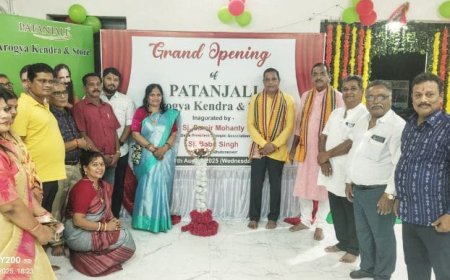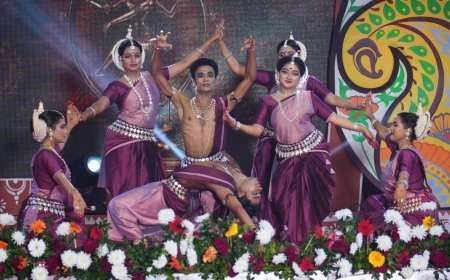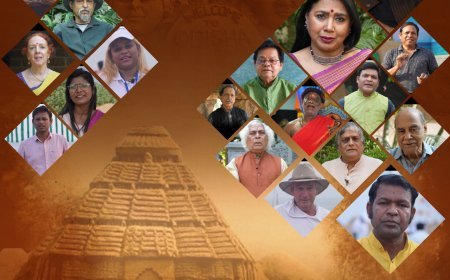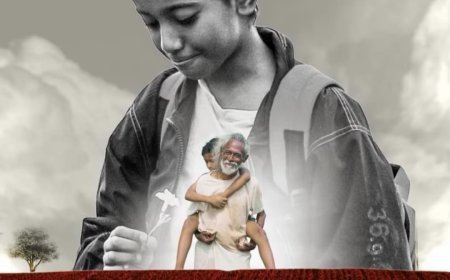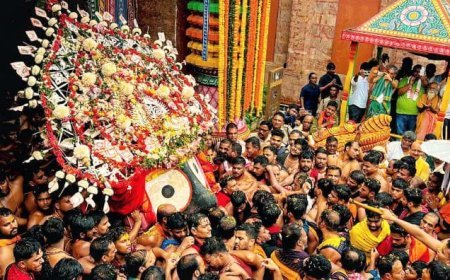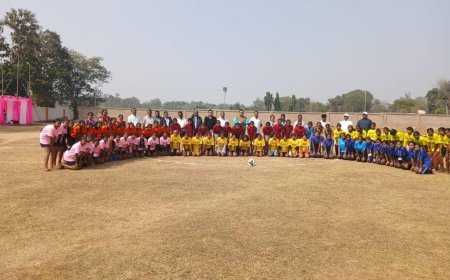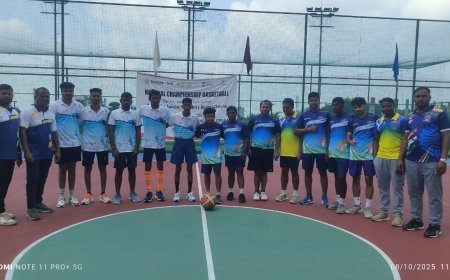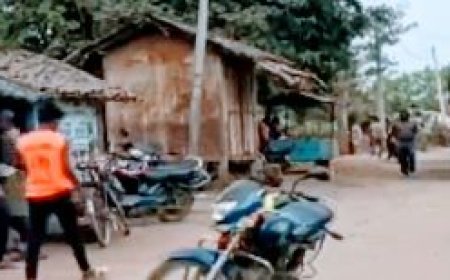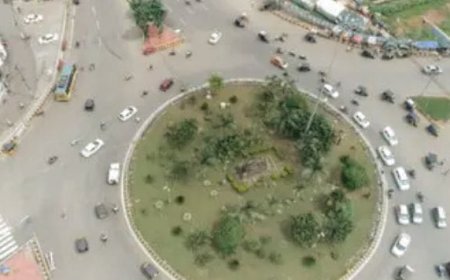Kalinga: The Ocean Kingdom of Eastern India

Bikash Chandra Swain
(Revisiting the Maritime Civilization that Shaped Odisha’s Identity)
When we speak of ancient India, we often imagine kingdoms rising inland, surrounded by forests and river valleys. Yet on the eastern coast, a very different world existed. Kalinga, corresponding broadly to present-day Odisha, grew not by turning inward but by turning toward the ocean. For the people of Kalinga, the sea was not a barrier but a direction. The coastline did not mark the end of their world; it marked the beginning of their connections. Trade, diplomacy, movement, culture, and power flowed outward from the ports of Kalinga into the Indian Ocean and far beyond.
The memory of this ocean-facing identity survives in the living tradition of Balijatra. Every year, as small boats are floated on rivers and marketplaces fill with celebration, the past becomes visible. The festival is not merely an event of joy; it is an act of remembrance. It echoes the time when ships set sail from the Mahanadi delta toward Sri Lanka, Burma, Bali, Java, Sumatra, and the broader world of Southeast Asia. This identity was not born of folklore—archaeology, inscriptions, travel accounts, and oral traditions all point to Kalinga as a civilization deeply shaped by the sea.
The urban archaeological site of Sisupalgarh, near Bhubaneswar, reinforces this picture. German archaeologist Paul Yule’s research shows that Sisupalgarh was not a simple settlement but a planned urban centre, complete with monumental gateways, geometrically aligned fortifications, organized habitation zones, and evidence of civic planning. Its cultural roots go back nearly three thousand years, suggesting that Kalinga possessed the administrative and structural maturity to sustain trade, governance, and stable community life. Sisupalgarh was not isolated—it was connected, both regionally and internationally. Across Odisha, sites such as Radhanagar, Asurgarh, Kharligarh, Raibania, Jaugada, and the coastal habitations around Chilika indicate a network of fortified towns, riverine routes, and marketplaces—together forming the outline of a civilization oriented toward movement and exchange.

The maritime routes of Kalinga were well known even to outsiders. The Greek writer Megasthenes, in his work Indica, described Kalinga as a region of wealth, trade, and military organization. He noted that the people of this land had the capacity to engage across the sea and maintain contact with distant countries. At a time when many civilizations hesitated before the uncertainty of the open ocean, Kalinga sent ships across it with confidence. Foreign sources and maritime logs from the Indian Ocean world still preserve traces of these ancient interactions.
The coastal settlements of Kalinga were hubs of shipbuilding and navigation. Archaeological findings around the Chilika region, particularly at Manikpatna, include foreign ceramics—evidence of long-standing commercial routes rather than random contacts. Cultural exchange travelled alongside trade. Symbols, rituals, languages, textile patterns, dance forms, and religious links between Kalinga and Southeast Asia show that the sea served as a channel of identity—not merely of commerce.
Kalinga’s maritime knowledge was not only practical but also embedded in cultural texts. The 16th-century Odia treatise ‘Paika Kheda’, which records military traditions, training practices, transport systems, and mobilization methods, mentions boat designs used for troop movement and coastal defense. The boats described were not light fishing crafts but strong, stable vessels suited for disciplined, coordinated navigation—revealing that naval strategy was part of the region’s military structure. This shows that Kalinga’s maritime activity extended beyond trade into defense, logistics, and maritime administration.
A silent but striking artifact strengthens this picture—the stone sculpture of an elephant on a boat preserved in the Odisha State Museum, Bhubaneswar. The image is not mere decoration; it reflects technological mastery. To carry an elephant, the vessel must have been engineered with a keen understanding of balance, buoyancy, and steering. It shows that the people of Kalinga had advanced knowledge of shipbuilding, ropework, and navigation—capable of sustaining long ocean voyages.
The memory of these traditions continued long after the voyages ceased. Songs like “Aa-Ka-Ma-Bai”, sung during Balijatra, recall ancient trade routes, naming ports and stopping points across the Bay of Bengal. Miniature boats still sail in ritual, temple carvings retain maritime motifs, and coastal place names preserve traces of old ports.

The rivers of Odisha also played a vital role in sustaining this maritime civilization. The Mahanadi, Brahmani, Baitarani, Subarnarekha, Vansadhara, Rushikulya, and Nagavali rivers formed the internal arteries of trade and movement. They connected towns, marketplaces, and port clusters into a continuous chain of exchange. River transport was faster, safer, and more efficient than land travel. Communities along riverbanks evolved into craft centers and cultural crossroads, shaping Odisha’s inland–coastal unity.
The strategic position of Cuttack, at the confluence of the Mahanadi and Kathajodi, is a clear example. Its growth followed the rhythm of the rivers. Boats from upstream and coastal ports converged naturally, creating a vibrant commercial hub. The city’s historical identity as a capital cannot be separated from its riverine geography, which linked administration with both coast and hinterland.
Regions like Sambalpur, situated on the upper Mahanadi, played a key role in inland trade—exchanging metals, cloth, grains, and forest products with the coastal regions. Similarly, Jajpur, near the Baitarani, emerged as a cultural and industrial center supported by river-based communication and craftsmanship. These rivers were not just geographical features—they were economic memories.
Across centuries, rivers continued to carry culture silently—guiding movement, shaping settlements, and sustaining livelihoods based on craft, agriculture, and trade. Even today, in many districts of Odisha, boats continue to ferry people and goods, echoing the rhythm of their ancient past.
The presence of boats in rural life today is not accidental; it is a continuation of a much older pattern. When small wooden boats glide across village rivers, they move in the shadow of the great ocean-going vessels that once sailed from Kalinga’s ports. The scale has changed, but the memory remains. The techniques of boat-making, the understanding of current and tide, even the vocabulary of the river, carry whispers of a maritime legacy.
To understand Kalinga as a Samudra-Rajya—an Ocean Kingdom—is to reimagine India’s past. The coastline was not the edge of civilization; it was its opening. The people who lived along these waters did not fear the horizon—they embraced it. They learned the language of wind, tide, current, and star. They built vessels strong enough to travel and return. They created relationships across waters that shaped identity, trade, and diplomacy.
To remember this is to recognize that the heritage of Odisha is not only carved in temples or preserved in manuscripts—it also lives in waves, ports, boats, and journeys. The ocean has held our past quietly, but it has never forgotten it.
Now, it is time we remember it too.
When the world feared the ocean, Kalinga sailed.
Bikash Chandra Swain
Young Researcher & Journalist,
Bhubaneswar
???? 8249990958







